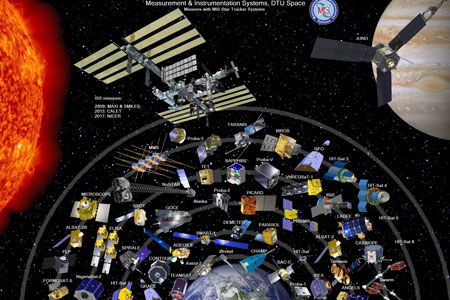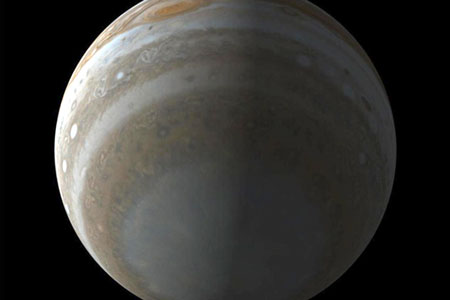A new way to use star cameras may help make savings in space mission budgets.
A new way to use star cameras is opening the door to cutting the sky-high costs associated with pinpointing the location of a space probe. Radar is currently used to keep track of space probes, but the farther away from Earth a probe travels, the more expensive it is to establish exactly where it is, and this localization must be performed throughout the mission—which often lasts for years and years. This is because when a space probe travels farther away than Mars, into what space researchers call ‘deep space’, the only way to keep tabs on it is to use one of the biggest radio antennae in the world, which has a satellite dish with a diameter of around 70 metres.
There are only three of these giant antennae in the world, and it costs approx. USD 100,000 per day to locate a remote space probe. It is now possible to eliminate this expense almost completely by using star cameras on the probe itself to calculate the exact position of the probe. Star cameras are currently used as compasses to define which direction a spacecraft is facing in space, but their scope can be expanded to pinpoint the vessel’s position as well.
This can be done using triangulation, which means determining the position of the craft by measuring angles from the probe to the Moon, Earth or other planets. When the method was tested on space probe Juno, researchers from DTU space succeeded in calculating Juno’s position in space with remarkable accuracy. The overview below lists the more than 50 international space missions to date that have involved DTU star cameras. The cameras serve as a compass on the spacecraft, ensuring that satellites and probes can find their way in space.
|

Edited article from DYNAMO no. 40, DTU's quarterly magazine in Danish.
|
|
The overview lists the more than 50 international space missions to date that have involved DTU star cameras. The cameras serve as a compass on the spacecraft, ensuring that satellites and space cameras can find their way in space
|

NASA has been working with DTU Space for two decades, and has used equipment such as the University’s star cameras on a variety of spacecraft.
The star cameras from DTU Space are used as a compass on individual spacecraft, these cameras have been involved in more than 50 international space missions to date. The American space agency NASA is one of the partners to which DTU supplies star cameras on a regular basis. Mike Gross, flight system manager on the NASA mission ‘Grace Follow-On’, has been working with Professor John Leif Jørgensen and his team at DTU Space for around 17 years. And if you ask his opinion, this is a partnership that looks set to continue for many years:
“John and his team (the Measurement and Instrumentation division at DTU Space, ed.) are extremely skilled at developing their star cameras on an ongoing basis. They work hard to improve the performance and energy-efficiency of the cameras without ever losing sight of the cameras’ exceptional reliability. We therefore have great faith in both DTU Space and the cameras, and this allows NASA to maintain high confidence in the space missions we launch. We can be sure that the cameras will work, and we know that the DTU team will deliver on time and within budget. These are all crucial factors in a partnership,” emphasizes Mike Gross.